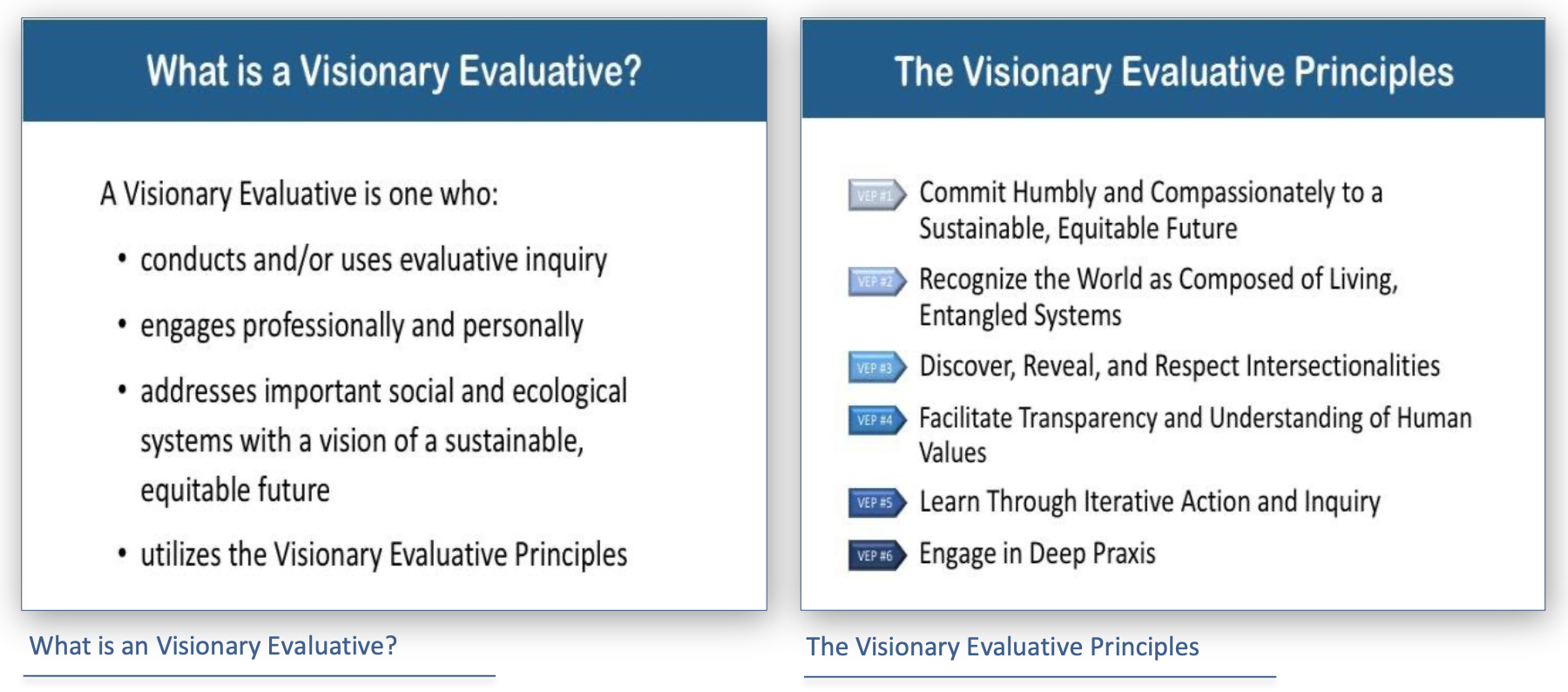My name is Cameron Norman and I am a contributor to the book Visionary Evaluation for a Sustainable, Equitable Future edited by Beverly Parsons, Lovely Dhillon and Matt Keene. I’m also a professional evaluator and designer who works with organizations on issues of innovation – which is often about creating services and products that move us toward a vision.
As a visionary evaluative working on innovation problems, I often view the problems of evaluation through two lenses (one for each eye??): systems thinking and design, which draw especially on the second Visionary Evaluative Principle.
My first lens — systems thinking — draws me to consider different perspectives that shape how we address problems of sustainability and well-being and what level of influence or leverage each provides us. Daniel Kim’s useful Vision Deployment Matrix is one such tool of systems thinking that articulates these levels and how they shape our desired future.
Rather than focus on the events of today (what we can witness and experience), systems thinking encourages us to look for patterns behind the events and the social, political, and organizational structures that support them. Those structures come from our mental models and our vision.
My other lens – design – helps me consider the question: how might we make this
vision for a sustainable and healthy planet a reality? As the saying goes: the
difference between a vision and delusion is whether other people can see it.
Design helps us to make that vision real by working with people to envision and
then create desired futures.

Lessons Learned: Every year I host a series of workshops at the AEA Conference called the Design Loft that brings evaluators together to learn the skills of design. Design can change your mindset about the situation, which allows us to better move toward a vision of wellbeing for our world by providing tools and a strategy to make ideas real. What this experience has confirmed for me is the need for:
- Creative, supportive spaces for thinking and doing.
- Simple, powerful tools to help people see problems differently to open up opportunities to do things differently.
Rad Resources: My chapter, Design: Creating the Future We Want, in Visionary Evaluation for a Sustainable, Equitable Future shows how design influences everything and how traditional design processes have been narrowly scoped by relatively few perspectives. Check it out for my take on how systems thinking and human values drive impactful evaluative designs in 2030.
Daniele Catalanotto’s Service Design blog provides insights into how to think about the services we create and use and the tools that can help us along.
I’ve created a newsletter that is (super rad!) filled with resources that pull together the latest in evaluation, design, and systems thinking.
The American Evaluation Association is celebrating the publication of Visionary Evaluation for a Sustainable, Equitable Future, an outgrowth of the Evaluation 2014 conference theme with the same name. The contributions all this week to aea365 come from editors and authors of the book. Do you have questions, concerns, kudos, or content to extend this aea365 contribution? Please add them in the comments section for this post on the aea365 webpage so that we may enrich our community of practice. Would you like to submit an aea365 Tip? Please send a note of interest to aea365@eval.org. aea365 is sponsored by the American Evaluation Association and provides a Tip-a-Day by and for evaluators.

